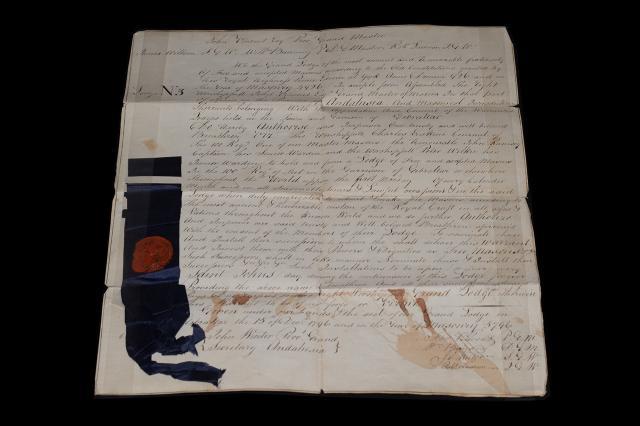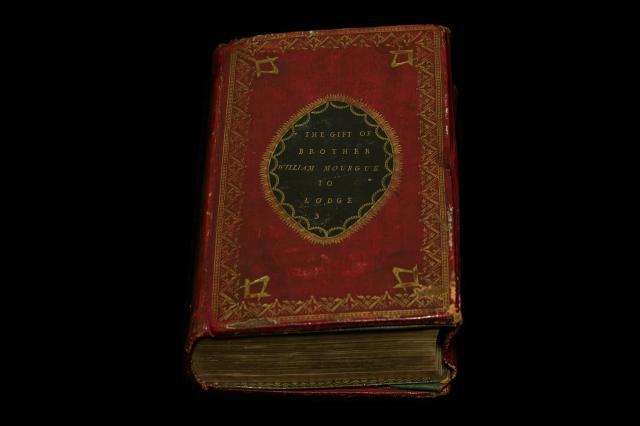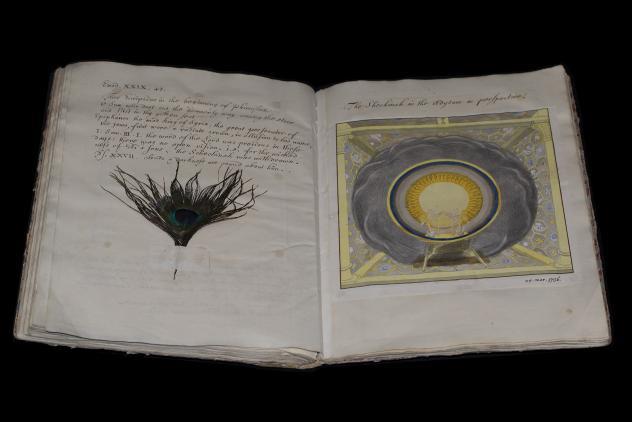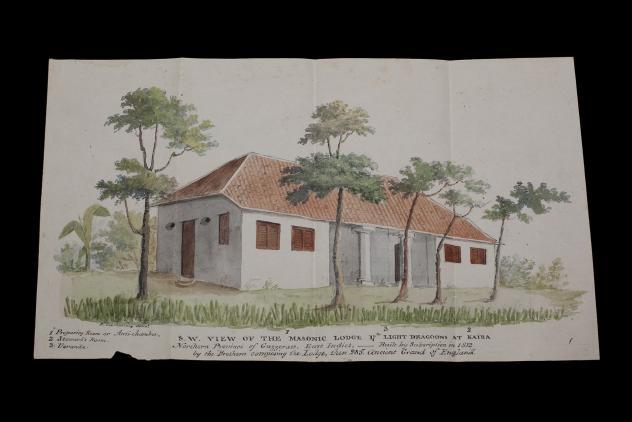To me, there is no document more important to a lodge than its warrant. Without one, meetings can’t be held and the examples I see arriving into the Museum are often elaborately framed, or accompanied by a specially made embossed leather pouch to keep it safe. Alongside details of a lodge name and number, warrants also state the place where the lodge intends to meet. On a modern warrant, you usually see the name of a masonic hall, specifically built for the purpose. Back in the eighteenth century though, things were a little different.
Although many lodges at that time were meeting in fixed places (usually the local tavern!), there were others where a fixed place of meeting was impossible. At this time, a number of lodges were springing up in military regiments – regiments that travelled to wherever the battles took them. For these lodges, their regiment was the meeting place: their camp the lodge room. The warrants for these were known as ‘travelling’ warrants and they would accompany regiments wherever they went.
As well as a warrant, a lodge also needs a volume of sacred law to be able to hold a meeting. When delving into the Museum’s strongrooms for items to be displayed in our Treasures exhibition, we came across this beautiful Bible, inscribed as ‘The gift of Brother William Mourgue to Lodge 351’. Opening the exquisite red Morocco leather covers, we found pockets at both the front and back. Tucked safely in one of these pockets was a document dated 1796, which on closer inspection revealed itself to be a travelling warrant.
We were expecting the warrant to relate to the lodge that presented the Bible, but this turned out not to be the case. Research uncovered that not only did they relate to different lodges, but they were Irish and Scottish rather than English constitution.

Lodge 351 was granted a warrant by the Grand Lodge of Ireland in 1760 and met in the 18th (Royal Irish) Regiment of Foot. Their travelling warrant allowed them to meet wherever they were garrisoned, which turned out to be pretty varied. When the lodge was formed, the regiment was in Ireland, but by 1767 they were in Philadelphia lending a hand during the American War of Independence in 1775. They returned to Britain in 1782 but didn’t stay put for long. Spain laid siege to Gibraltar from 1779 until 1783 and in 1784, the Royal Irish, and the lodge, were sent to Gibraltar to strengthen the garrison. They stayed until 1793 and it was during this period where the Lodge received the Bible from William Mourgue, a member of the Regiment and probably also a member of the Lodge. The membership registers don’t survive for this period so unfortunately, ‘probably’ is the best we can do!
So we know the 18th Foot were the first owners of the Bible, but the warrant inside suggests that it was passed on to a Lodge in the 100th Regiment of Foot, under the Provincial Grand Lodge of Andalusia in Spain. The 100th was a Scottish regiment, known as the Gordon Highlanders, after their first commander, George Gordon, Marquis of Huntly. In 1796, the regiment was stationed in Gibraltar, where they decided to form their lodge. Perhaps when the 18th Royal Irish moved on, they left their Bible behind?
We may never know the full story of how these two items came together, but, to me, their history shows how a lodge’s place to meet is less about a geographical location, and more about the people, and the objects they bring with them.
The William Mourgue Bible and warrant are part of the Museum’s special Library exhibition, Treasures, which is available to see in full on our website.




